|
Chorale Melodies used in Bach's Vocal Works
Nun lob, mein' Seel', den Herren |
|
Melody & Text | Use of the CM by Bach | Use of the CM by other composers |
| |
|
Melody & Text: |
|
"Nun lob, mein Seel, den Herren" (Now praise, my soul, the Lord) is a Lutheran hymn written in German by the theologian and reformer Johann Gramann (Poliander) in 1525. It was published in 1540 and appears in 47 hymnals. A translation by Catherine Winkworth, "My Soul, now Praise thy Maker!", was published in 1863. |
|
Melody: Zahn 8244
Composer: Johann Kugelmann (1540), derived from the secular song "Weiß mir ein Blümlein blaue" from 15th century. |
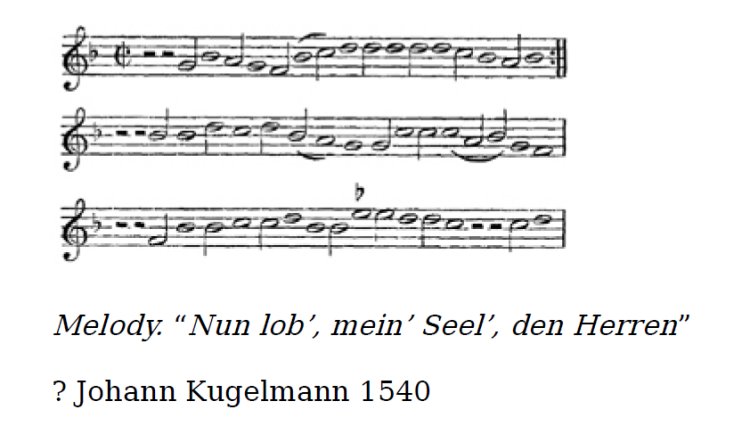 |
|

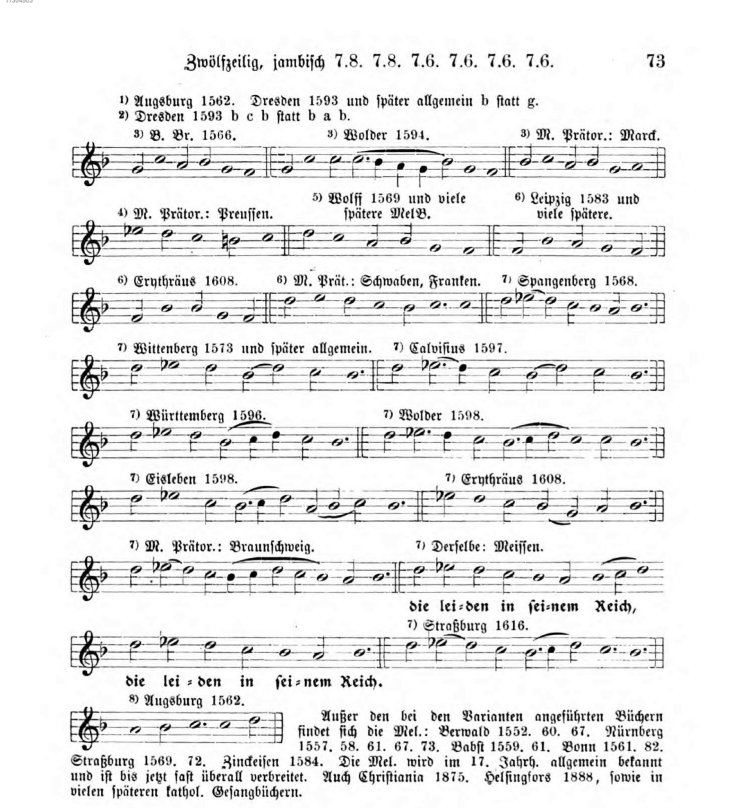
|
| |
|
Text: Nun lob, mein' Seel', den Herren (NLGB 686)
Author: Johann Gramann (Poliander) (1525) |
| |
|
Hymnal versions Bach may have known: |
|
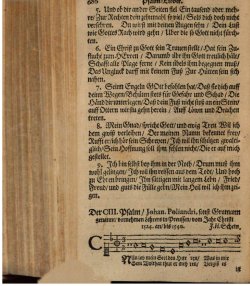 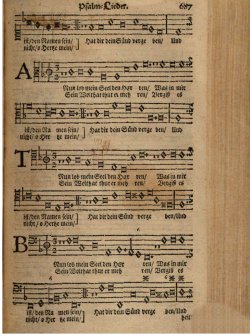
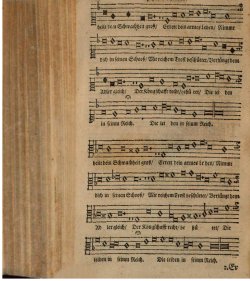
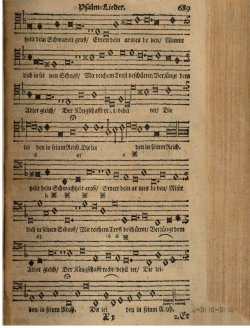
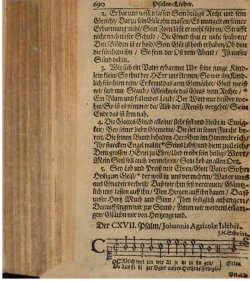
|
|
Melody & text of Nun lob, mein Seel, den Herren (NLGB 686) from the Neu Leipziger Gesangbuch, pp 686-690 |
| |
| |
|
Use of the Chorale Melody by Bach: |
|
Text: Nun lob, mein' Seel', den Herren (NLGB 686)
Author: Johann Gramann (Poliander) (1525) |
|
J.S. Bach used the hymn in several cantatas. He composed four-part settings to close cantatas Ihr Menschen, rühmet Gottes Liebe, BWV 167 (1723), Wer Dank opfert, der preiset mich, BWV 17 (1726), Jauchzet Gott in allen Landen, BWV 51 (1730) and Wir danken dir, Gott, wir danken dir, BWV 29 (1731). He set the hymn as a complex motet as movement 2 of his cantata for the Sunday after Christmas, Gottlob! nun geht das Jahr zu Ende, BWV 28, reflecting thanks for a year coming to a close. Bach also used the third stanza of the hymn for the second of three movements of the motet Singet dem Herrn ein neues Lied, BWV 225. |
|
Chorale Wie sich ein Vatr erbarmet (Mvt. 7) from Cantata BWV 17 (verse 3)
Ref: Riemenschneider 7; Breitkopf 6; Birnstiel 7; AmB 46II p.176; Levy–Mendelssohn 44; Fasch p.92 |
|

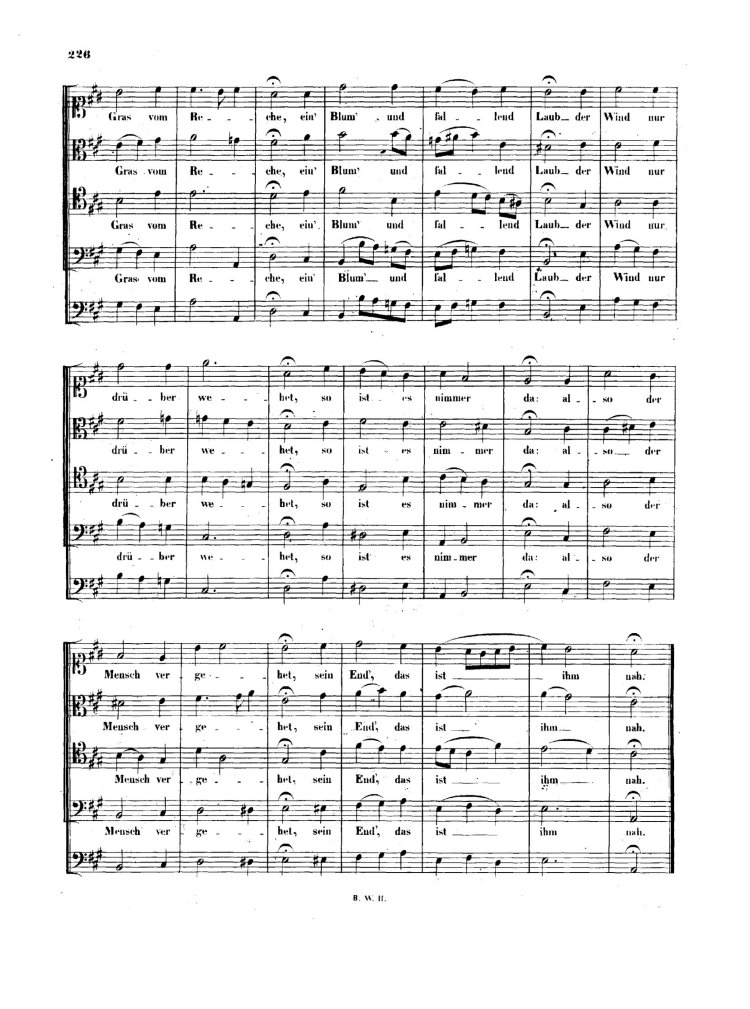
|
|
Form. Simple (2 Ob., Strings, Continuo). Choralgesange, No. 271 |
|
Chorus (Chorale) (Mvt. 2) Nun lob, mein Seel, den Herren from Cantata BWV 28 (verse 1) |
|
Form. Choral Motett (Cornetto, 3 Trombones, 2 Ob., Strings, Continuo). Erk, No. 3194 |
|
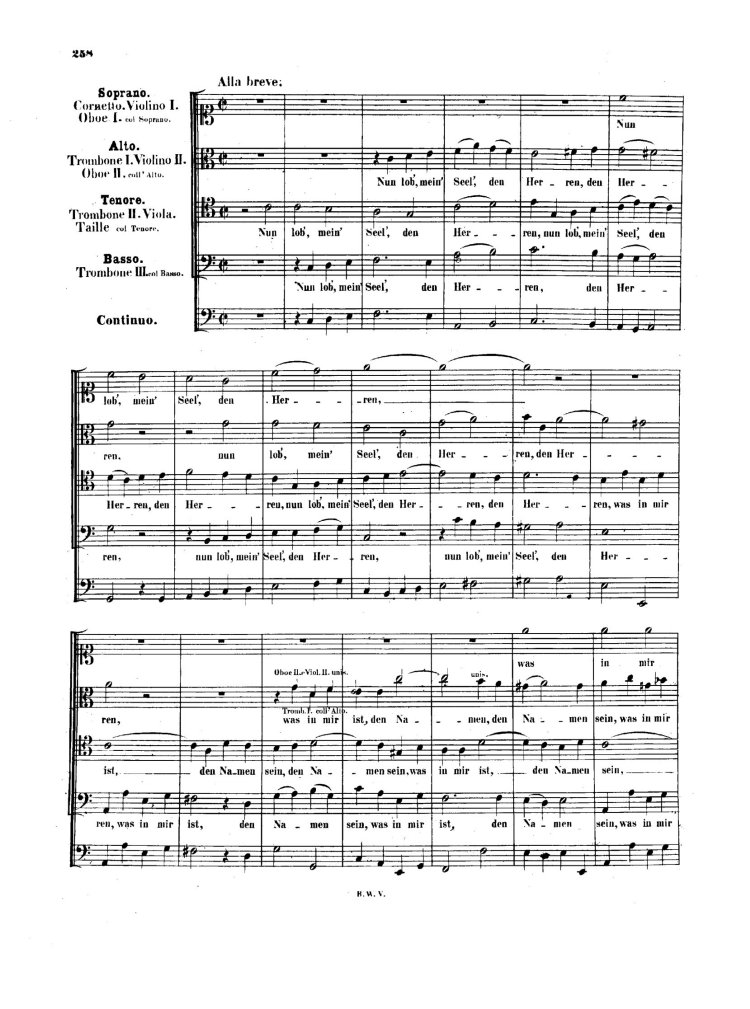
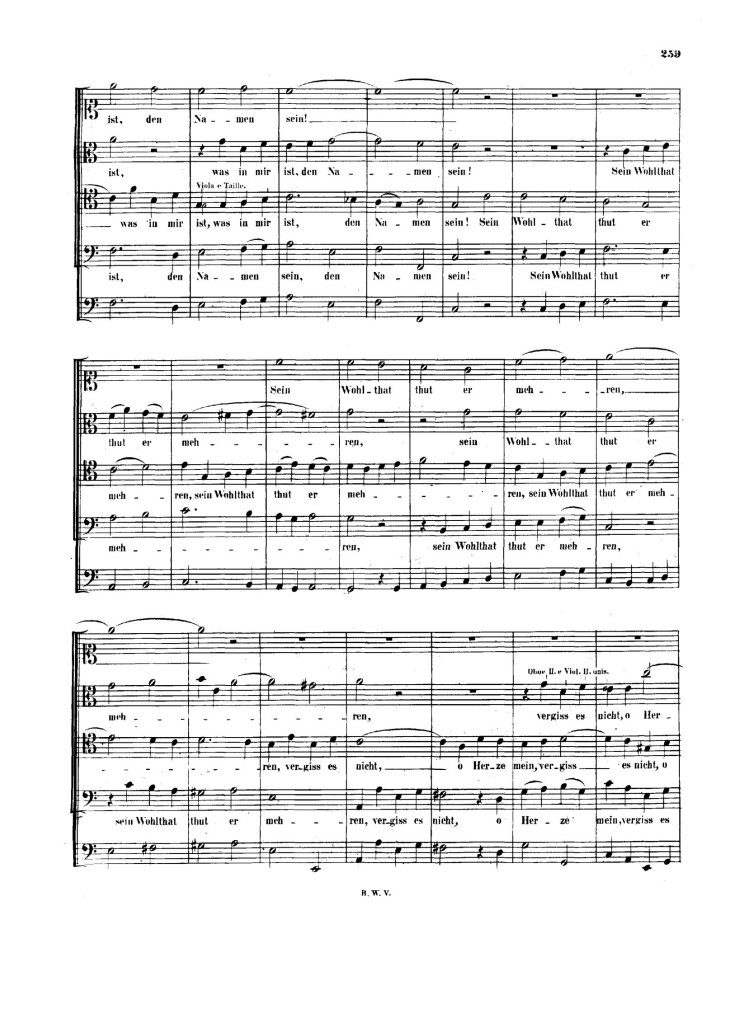
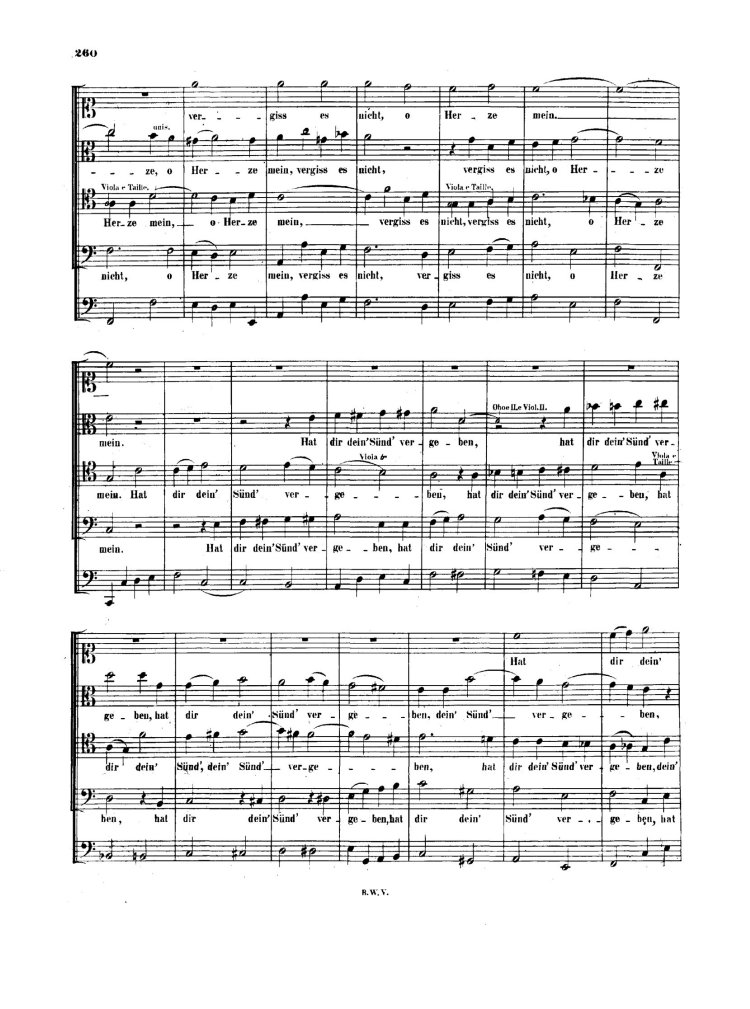
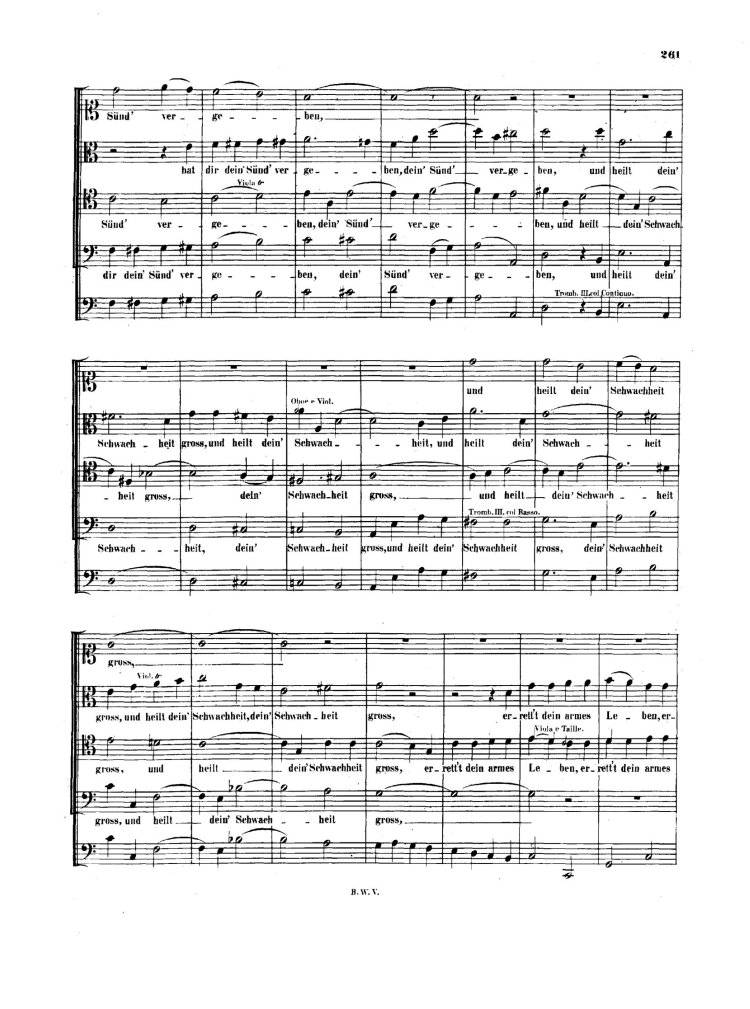
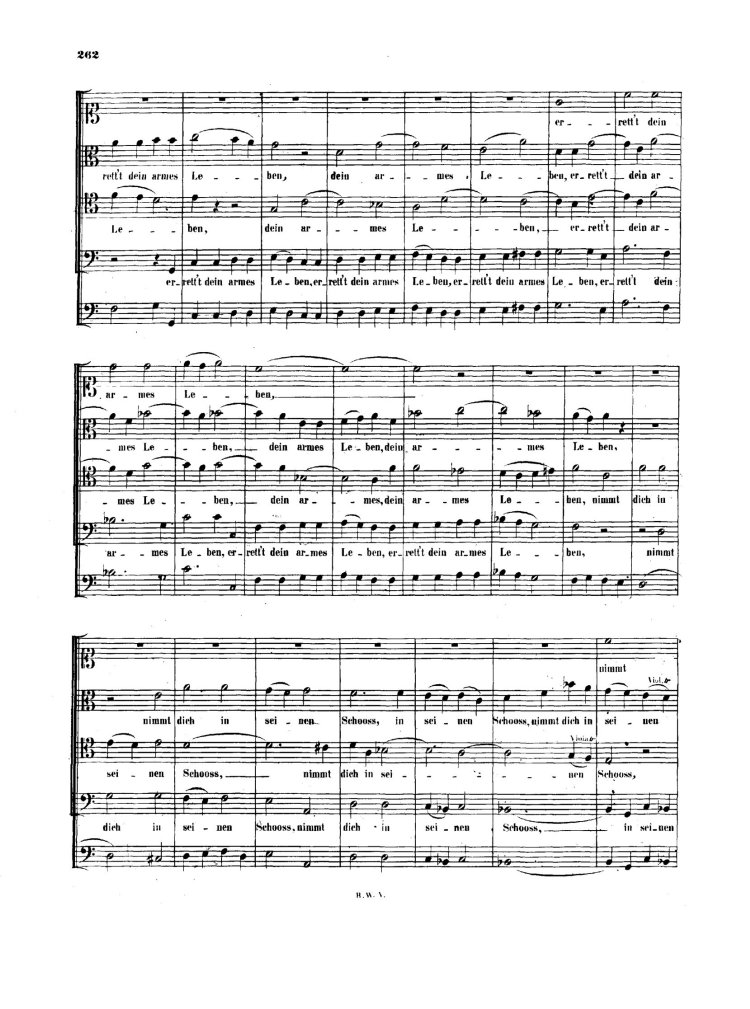
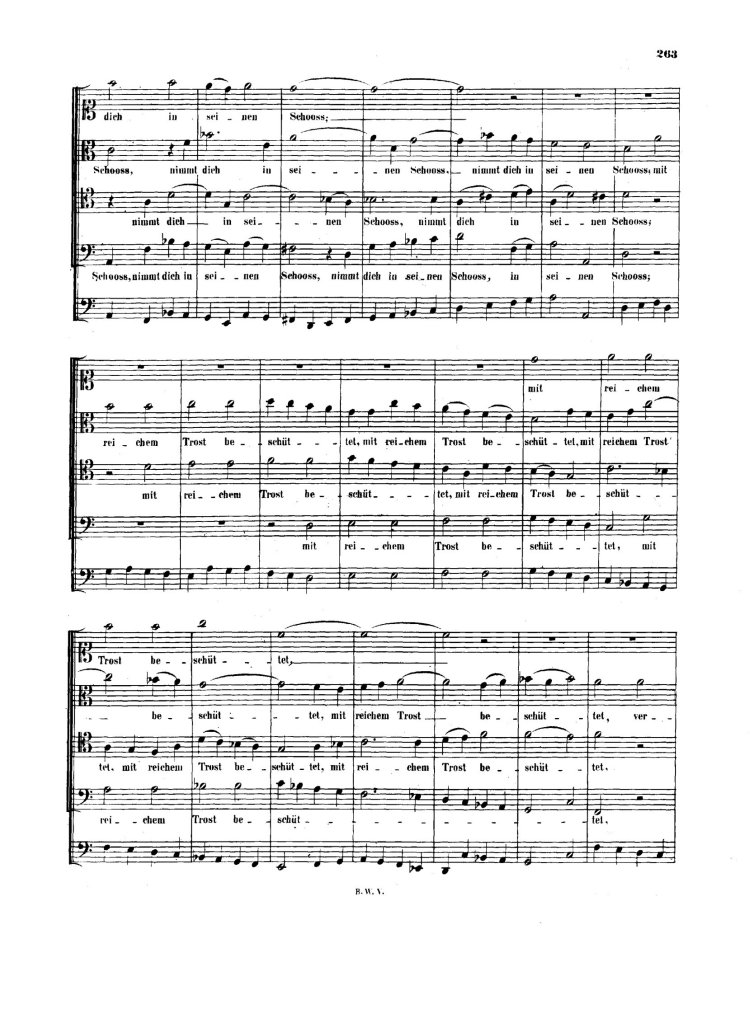
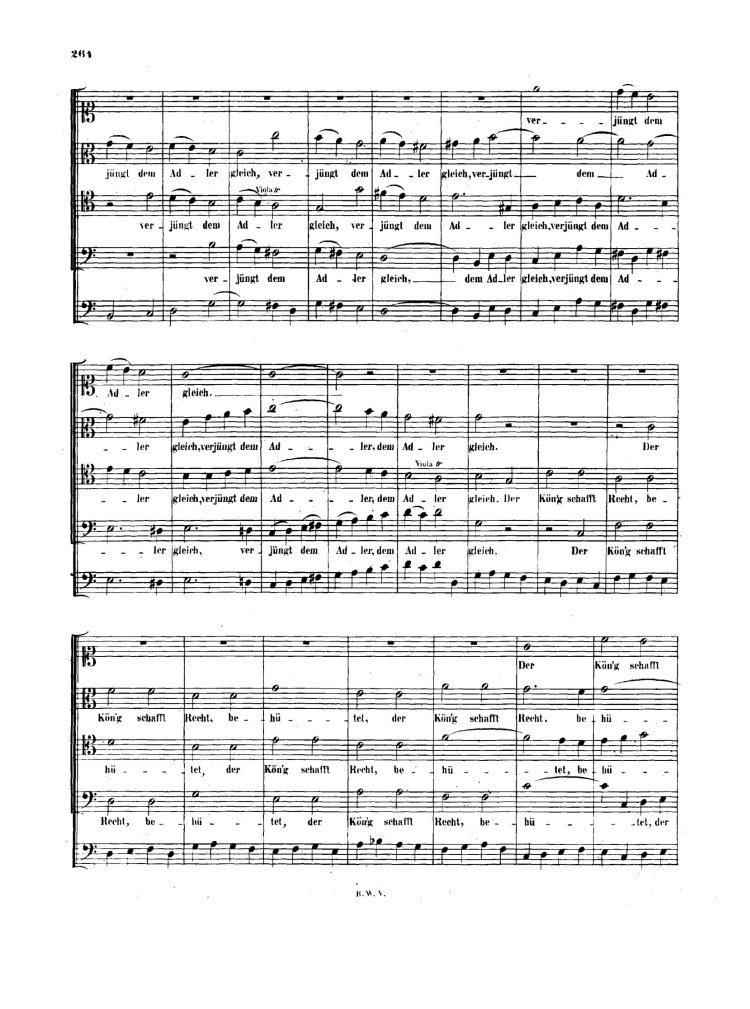
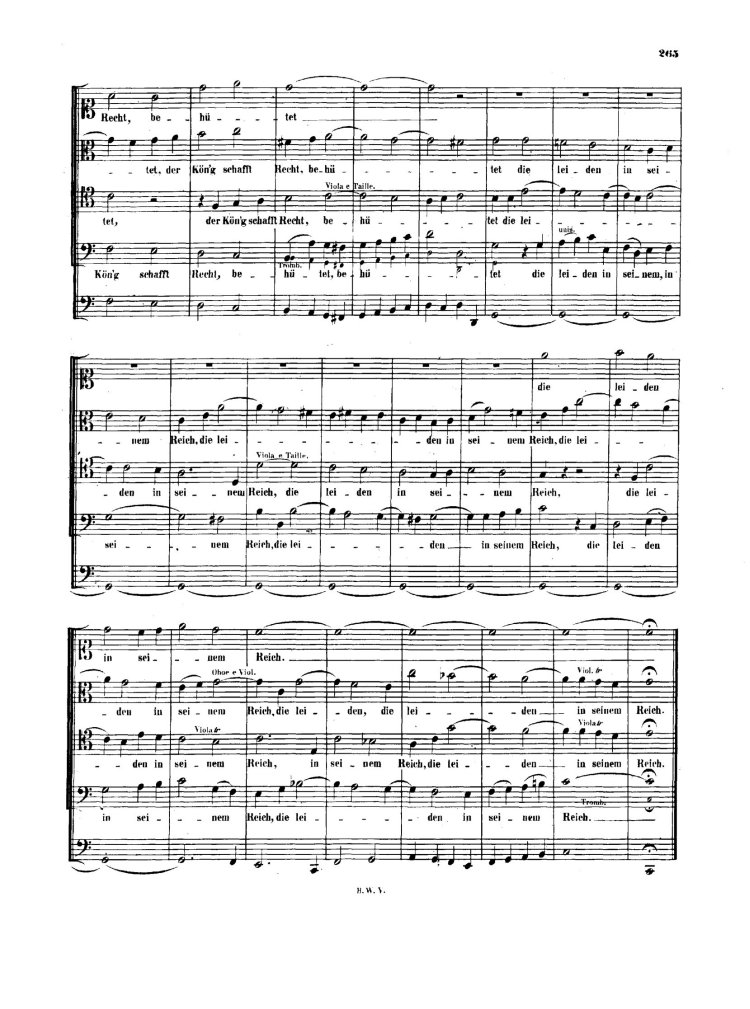
|
|
Chorale Sei Lob und Preis mit Ehren (Mvt. 8) from Cantata BWV 29 (verse 5)
Riemenschneider 116; Breitkopf 116; Birnstiel 121; Fasch p.94 |
|
Form. Embellished (3 Trombe, Timpani, 2 Ob., Strings, Organ, Continuo). Choralgesange, No. 272. |
|
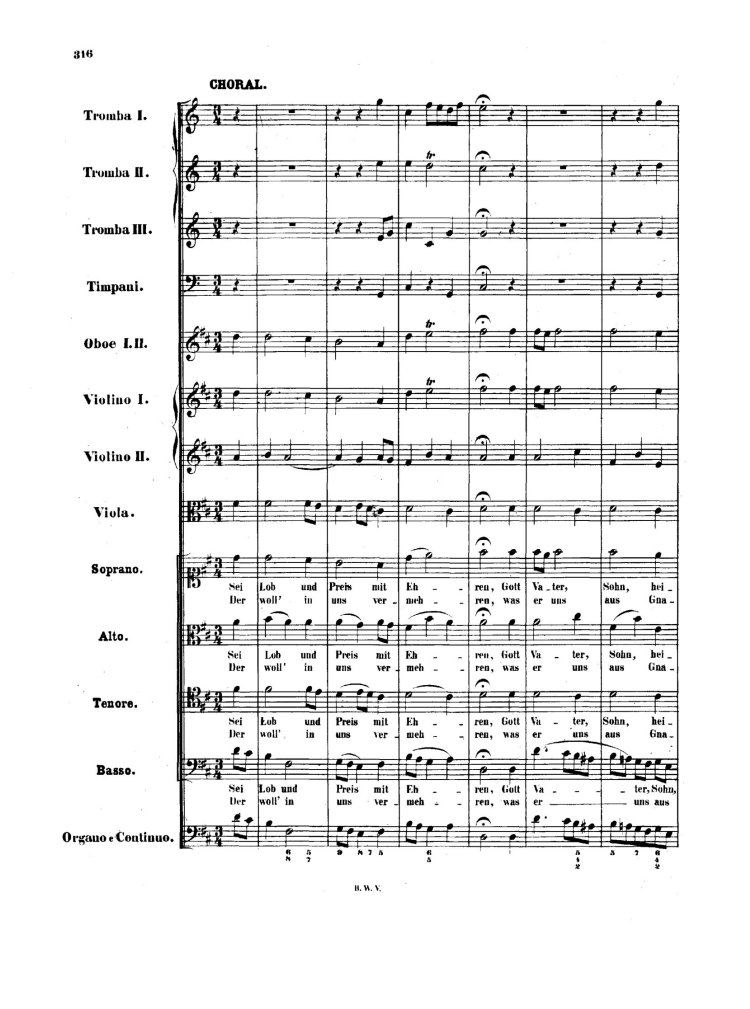

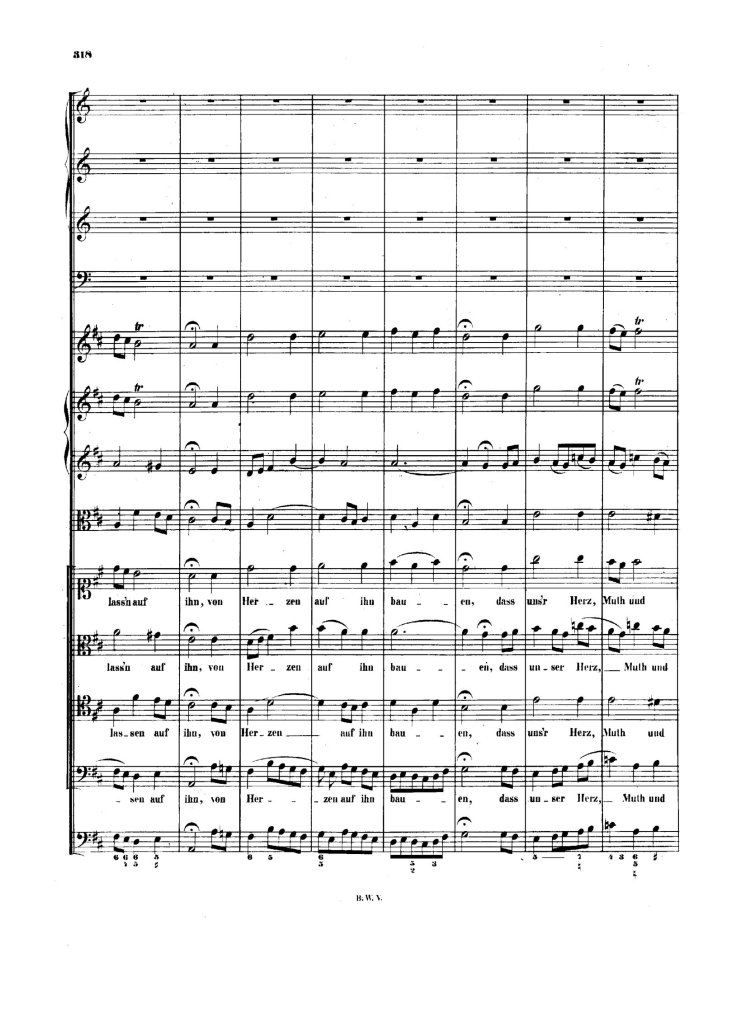
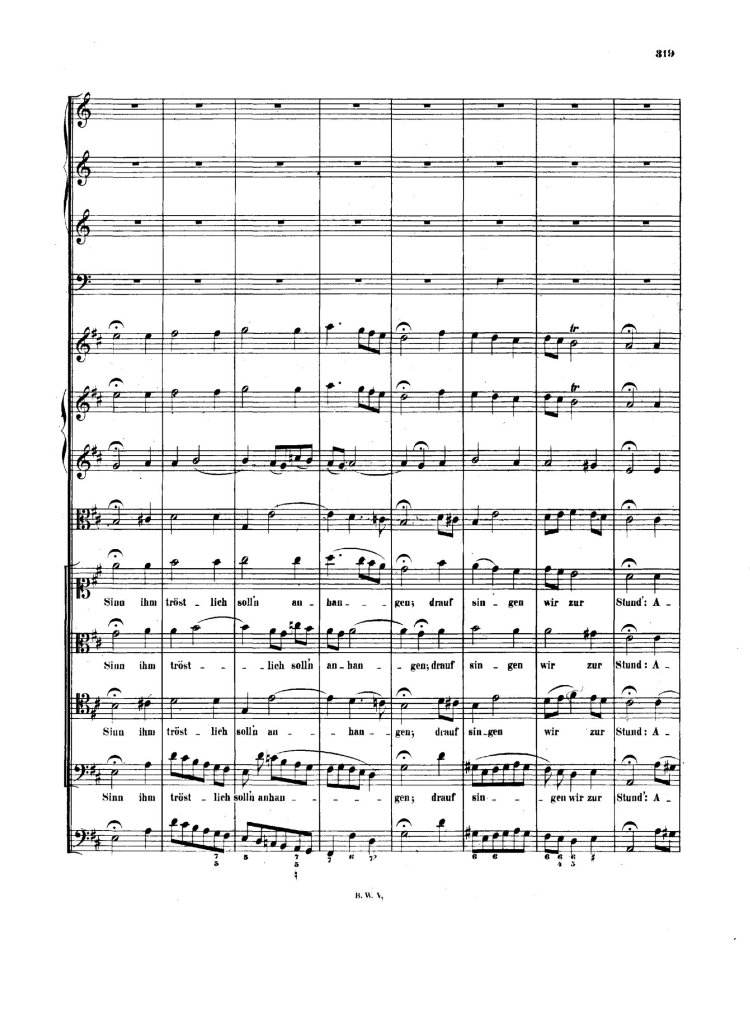
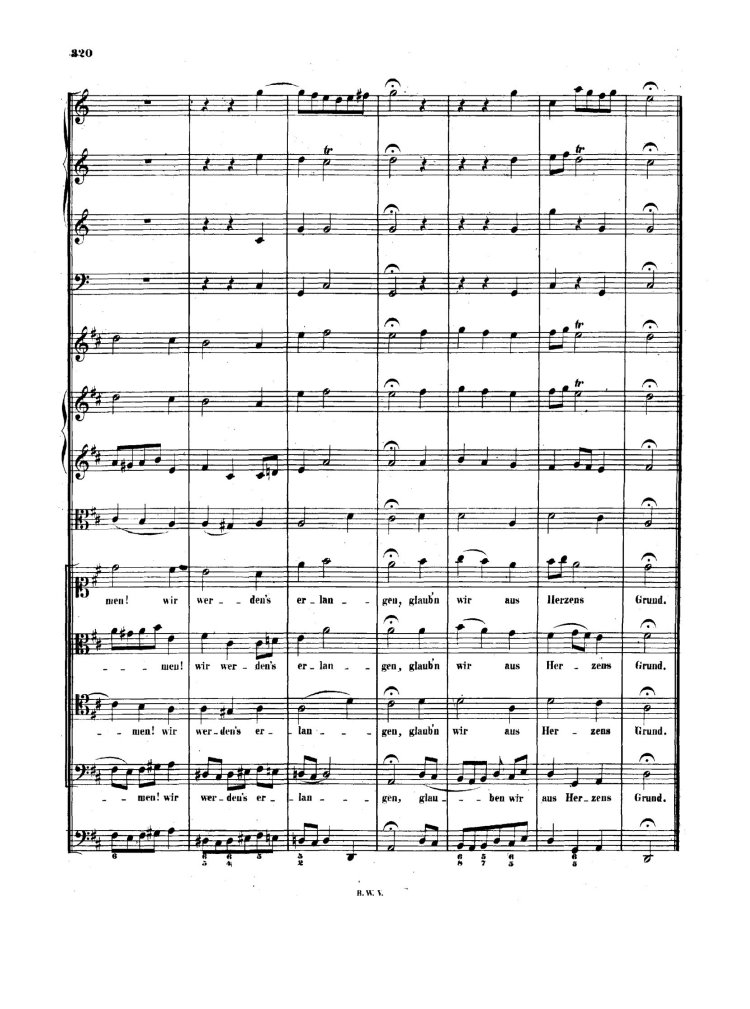
|
|
Chorale for Soprano Sei Lob und Preis mit Ehren (Mvt. 4) from Cantata BWV 51 (verse 5) |
|
Form. Soprano Unison Choral (Violino I and II Soli, Continuo). |
|

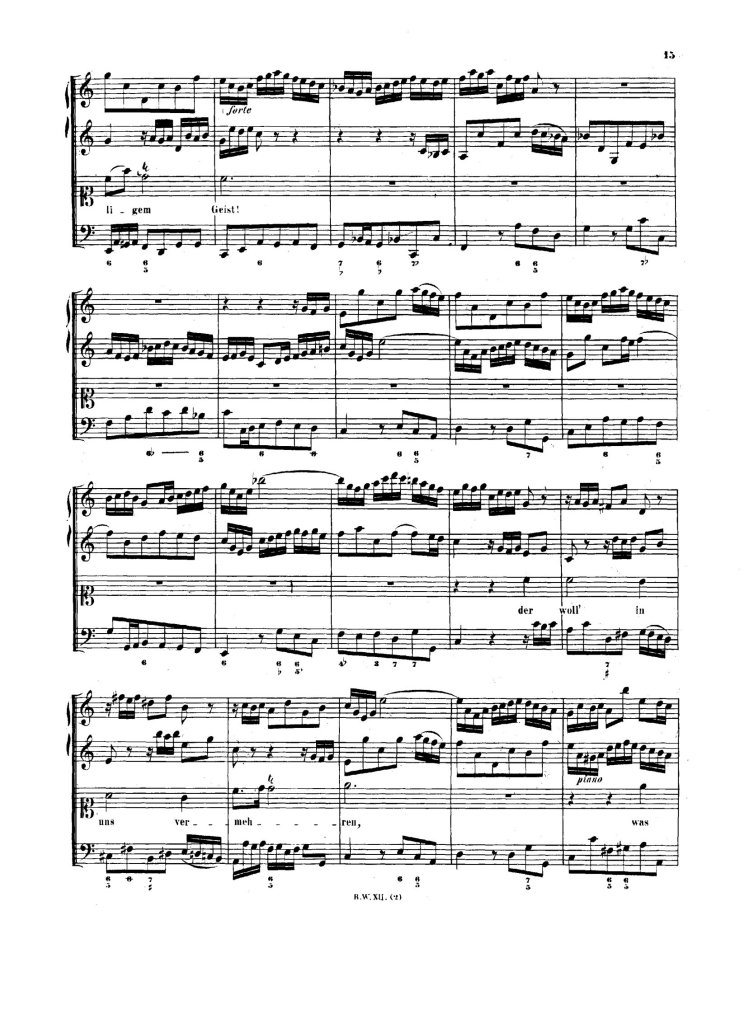
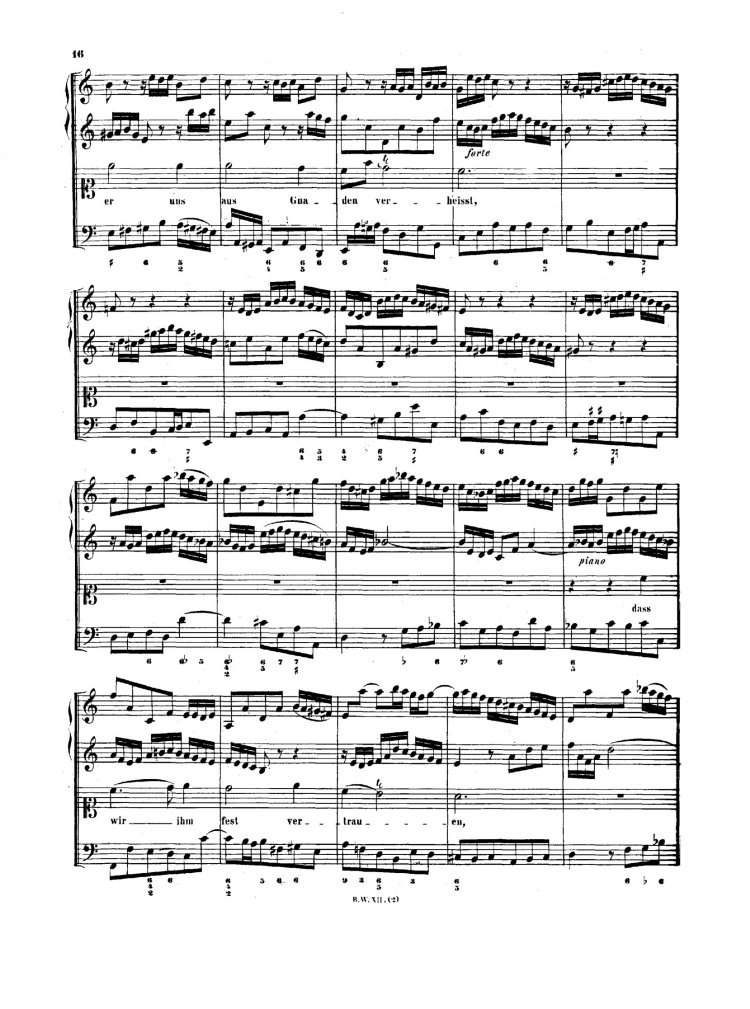

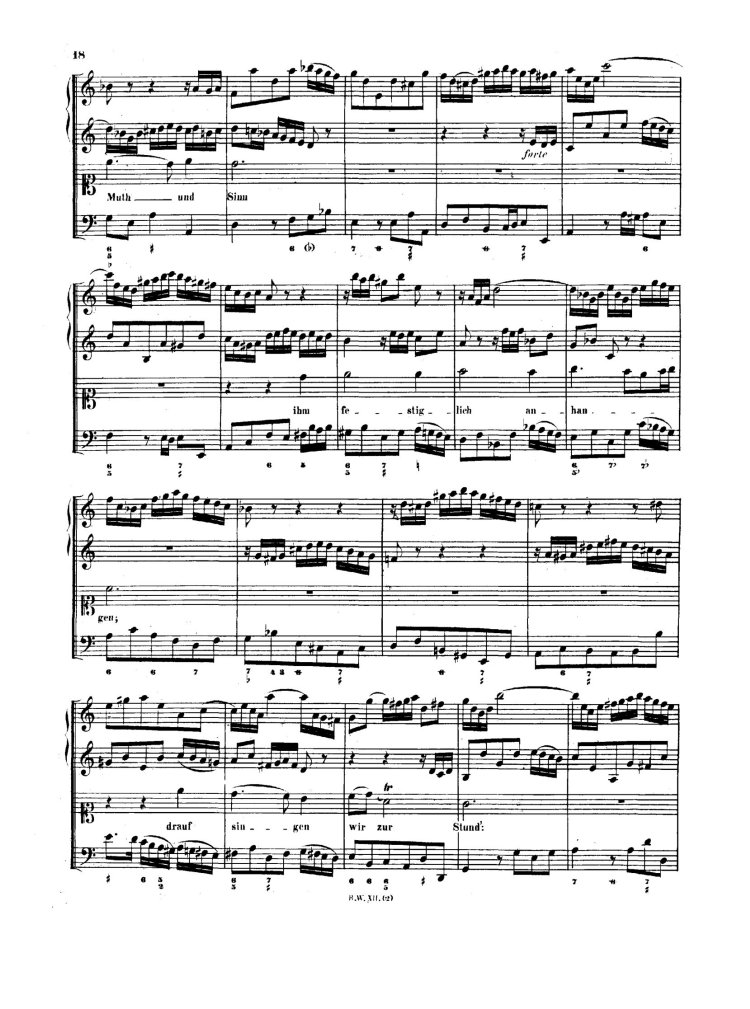

|
|
Chorale Sei Lob und Preis mit Ehren (Mvt. 5) from Cantata BWV 167 (verse 5) |
|
Form. Extended (Clarino, Oboe, Strings, Continuo). |
|
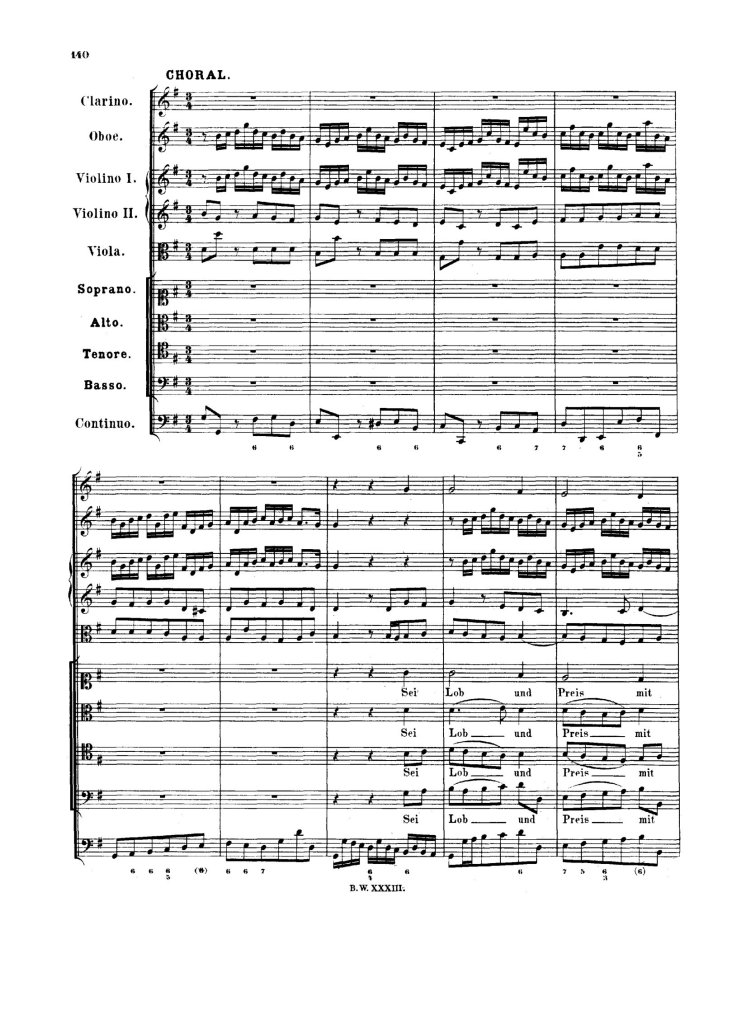

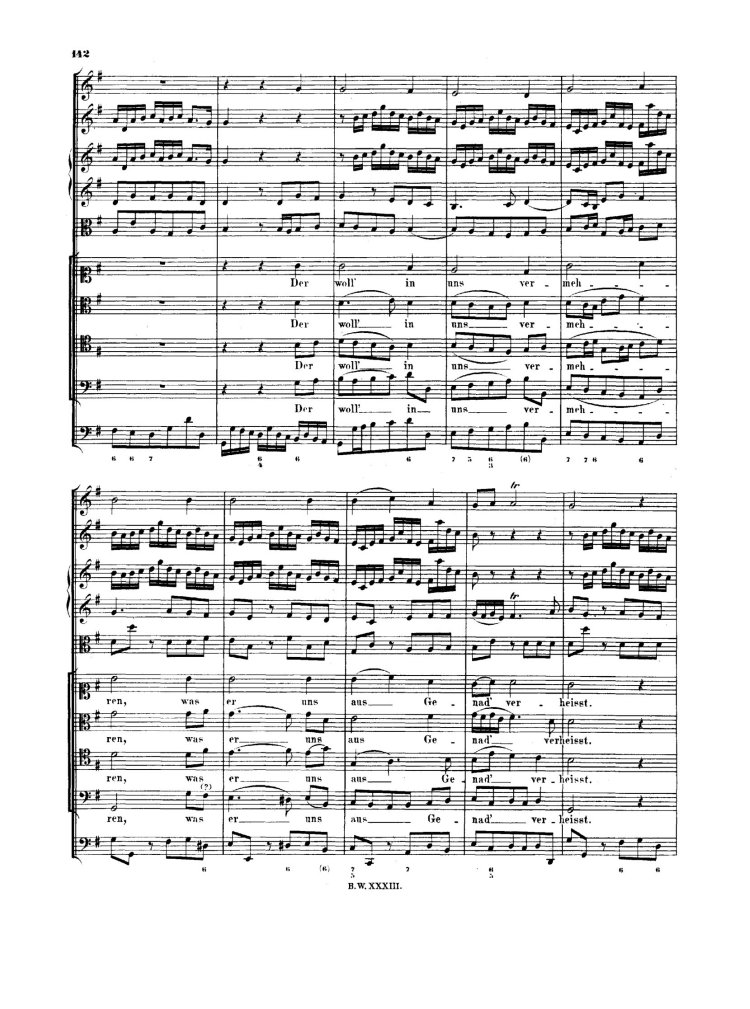

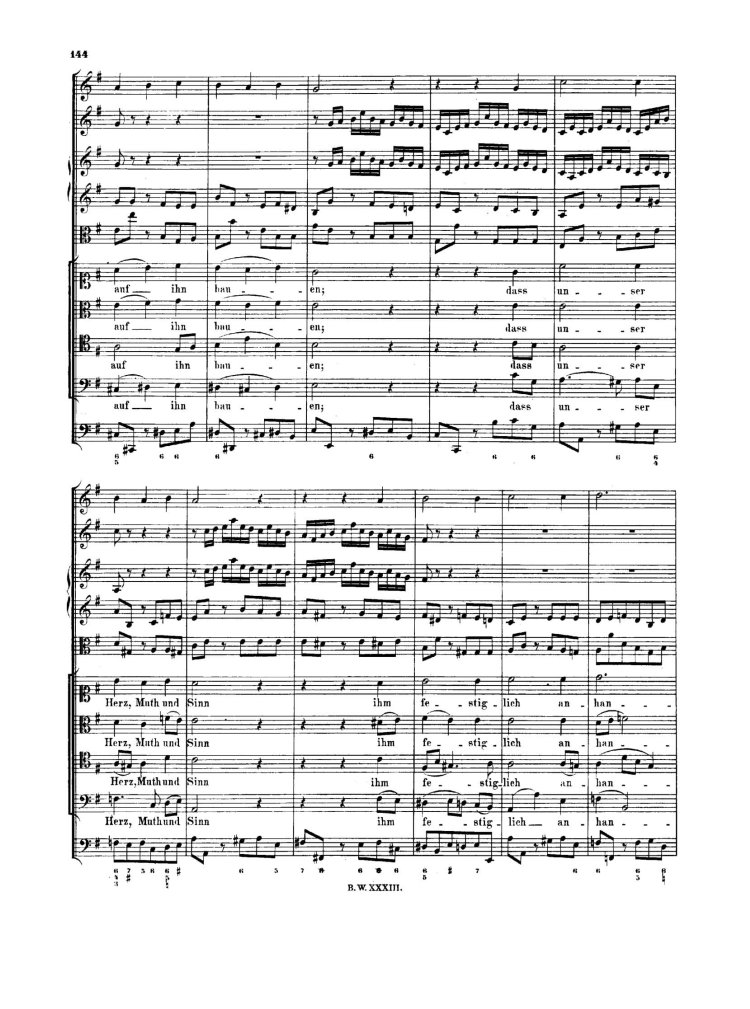
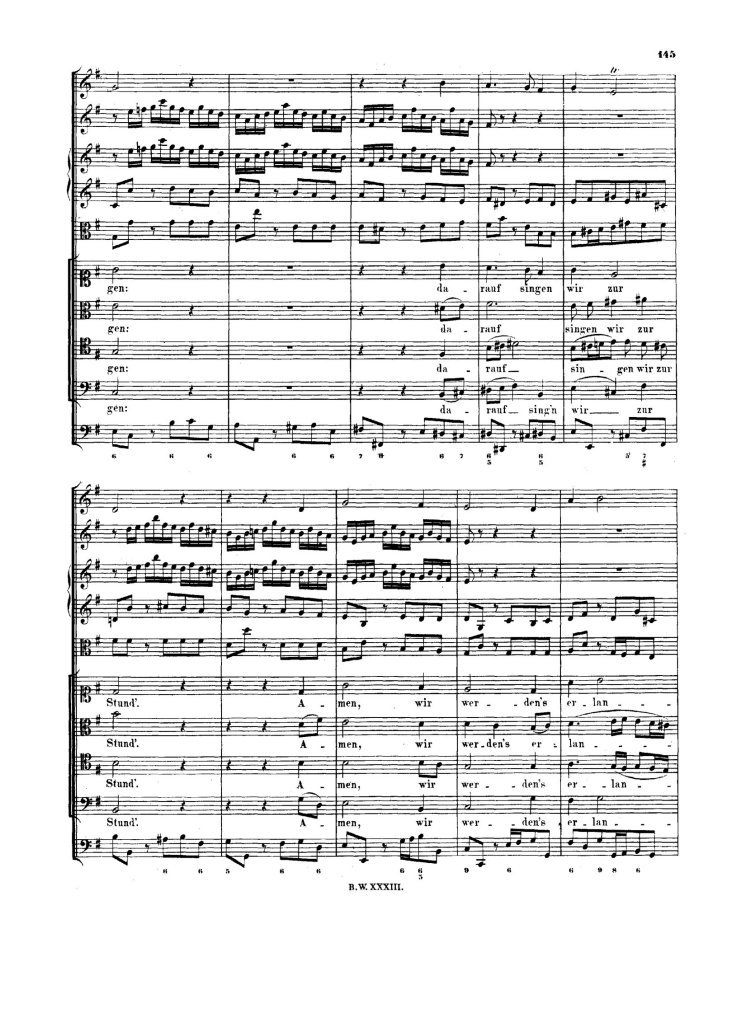
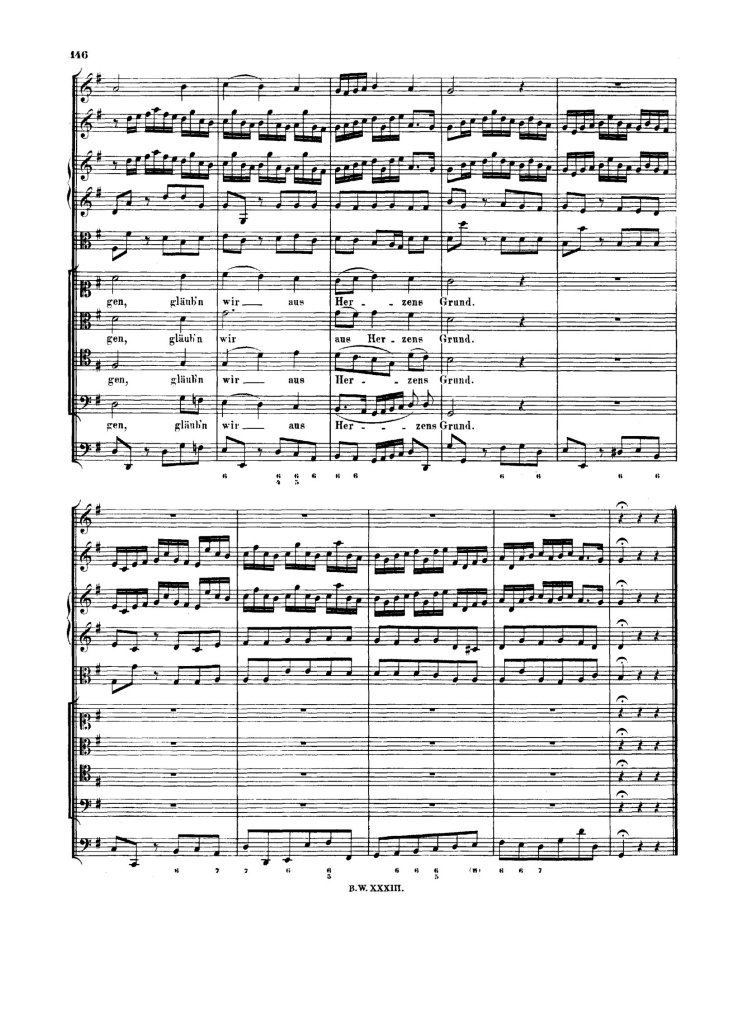
|
|
Chorus Wie sich ein Vater erbarmet (Mvt. 2) from Motet BWV 225 (verse 3) |
| |
|
Motet Sei Lob und Preis mit Ehren BWV 231
Transcription of BWV 28/2 |
|
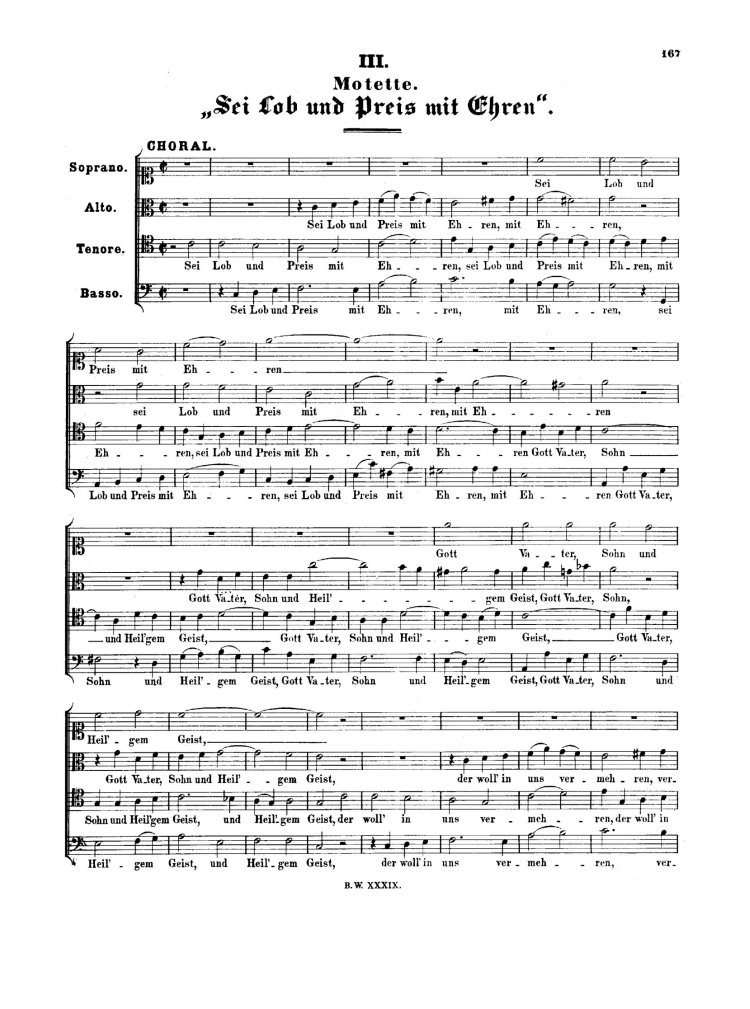
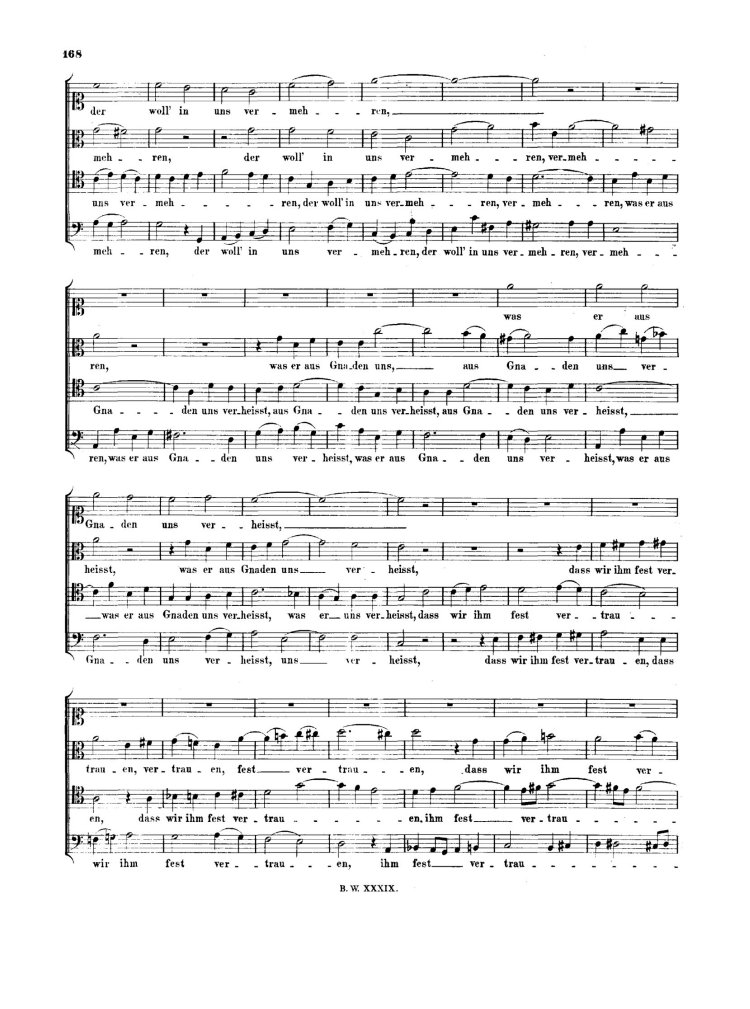

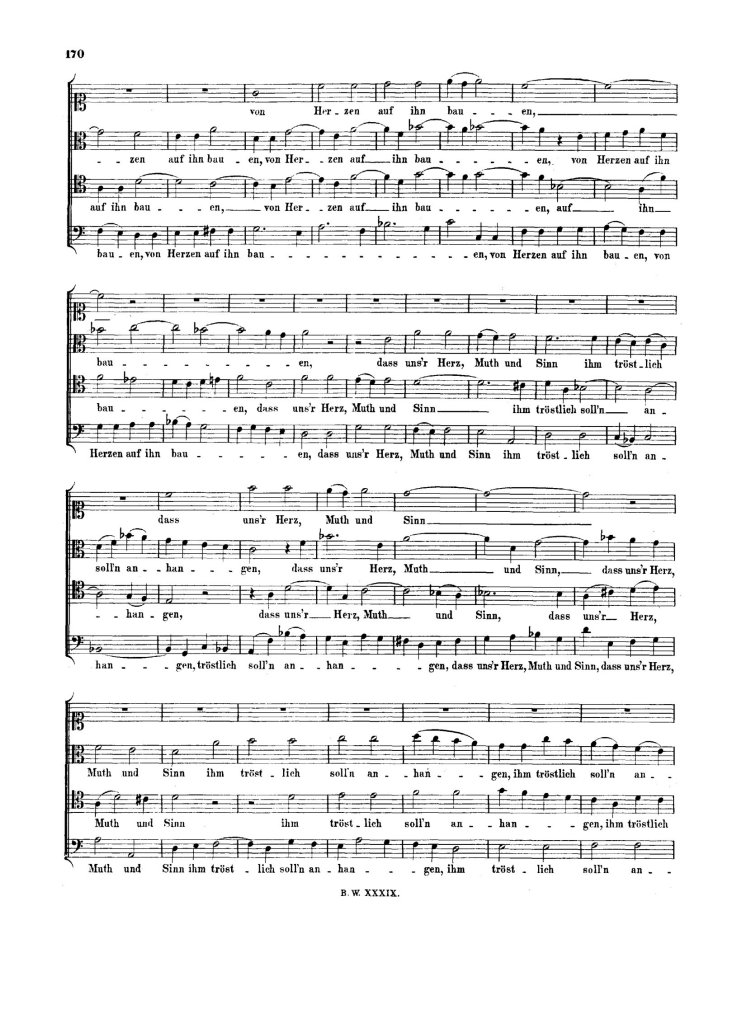
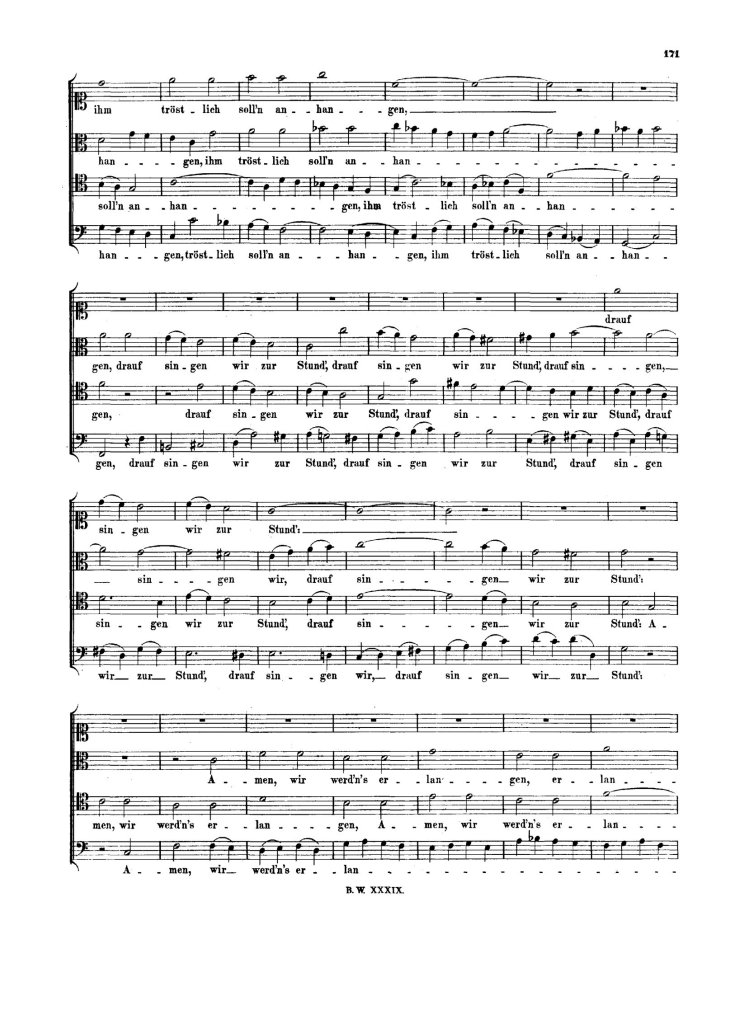
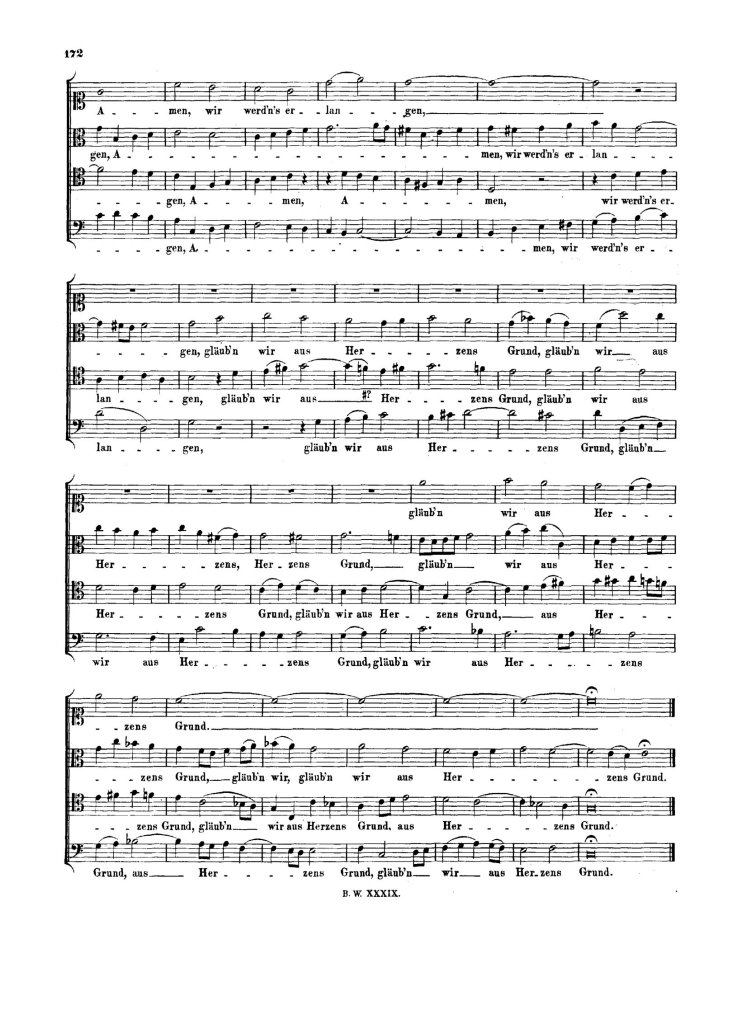
|
|
Chorale Nun lob', mein' Seel', den Herren, BWV 389
Ref: Riemenschneider 268; Breitkopf 268; Dietel 39; AmB 46II p.250 |
|
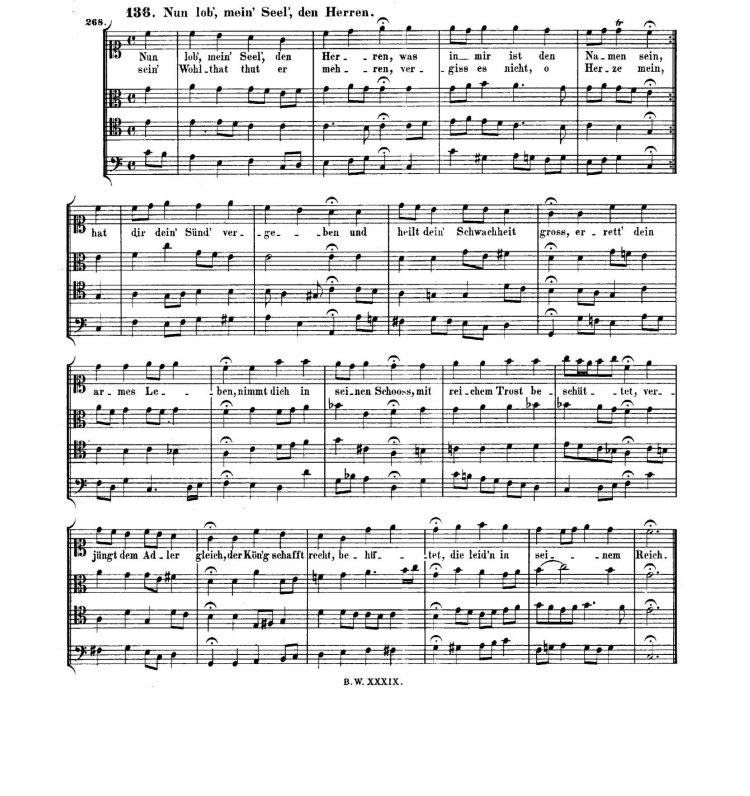
|
|
Chorale Nun lob', mein' Seel', den Herren, BWV 390
Ref: Riemenschneider 296; Breitkopf 295; Dietel 81; AmB 46II p.288 |
|
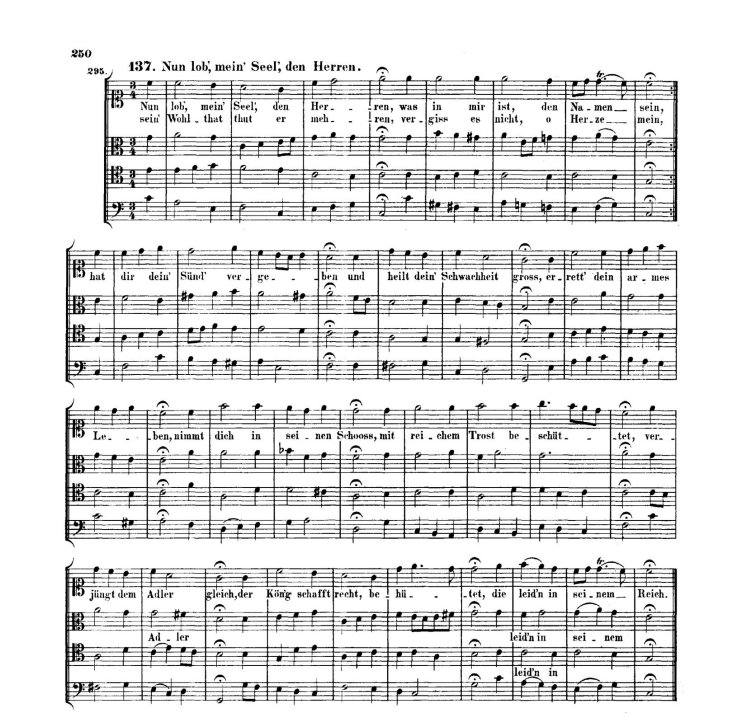
|
|
Chorale Sei Lob und Presi mit Ehren (Mvt. 2) from Motet BWV Anh 160 (verse 5) |
| |
| |
|
Use of the Chorale Melody by other composers: |
|
The text has been set by composers. Christoph Graupner wrote a cantata, Johann Hermann Schein composed a motet, Michael Praetorius a motet for eight voices. Heinrich Schütz set the hymn as part of Book I of his Psalmen Davids in 1619 (SWV 41). and Johann Pachelbel used the melody in a chorale prelude in about 1693. Dietrich Buxtehude composed a chorale fantasia, BuxWV 212, in C major, and three organ preludes, BuxWV 213–215. An organ prelude was also written by Johann Pachelbel. |
| |
|
Sources: Bach Digital; BGA; Zahn; BCML discussions on BCW; Charles Stanford Terry's Bach Chorals books
Photos from Gottfried Vopelius: Neu Leipziger Gesangbuch (Vopelius 1682) & Christian Friedrich Witt: Psalmodia Sacra, Oder: Andächtige und schöne Gesänge… (Gotha Hymnal, 1715), were taken from digital copies of the books downloaded from Bayerische Staatsbibliothek München. These copies are Out of copyright - non commercial re-use (Europeana Rights).
Prepared by Aryeh Oron (March 2020) |